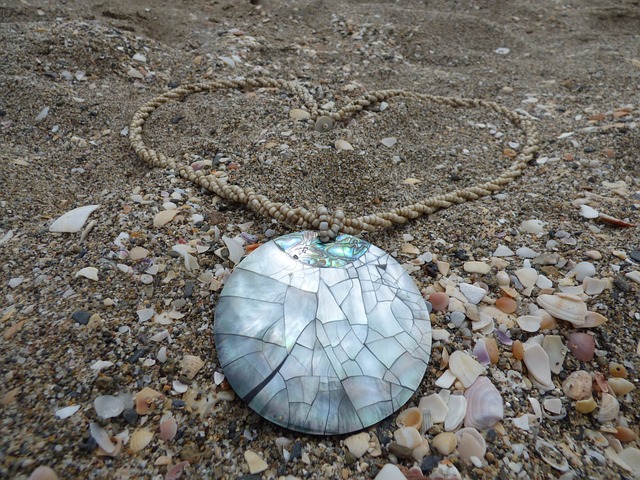As you stroll along the ruins, you can almost hear the clinking of coins and the shouts of merchants hawking their wares. This port was once the lifeblood of Constantinople, a gateway for goods flowing in and out of the empire. Think of it as the Amazon of its time, where spices, silks, and treasures from distant lands converged. The discovery of this site has opened a treasure trove of insights into how the Byzantines navigated their world, both literally and figuratively.
What’s truly fascinating is how the Port of Theodosius reflects the ingenuity of ancient engineering. The docks, warehouses, and even the remnants of ships reveal a sophisticated understanding of maritime trade. It’s like piecing together a giant jigsaw puzzle, where each fragment tells a story of adventure and commerce. Can you imagine the excitement of a sailor returning home after months at sea, laden with exotic goods?
Unearthing the Past: The Port of Theodosius Reveals Secrets of Byzantine Maritime Life
Picture this: ships laden with spices, silks, and treasures from distant lands, all converging at this bustling port. The air would have been thick with the scent of salt and adventure, as merchants haggled over goods and sailors shared stories of their voyages. The Port of Theodosius wasn’t just a docking point; it was the heartbeat of the Byzantine Empire, connecting Europe and Asia in a dance of trade and diplomacy.
But what secrets lie beneath the waves and within the ruins? Archaeologists have been unearthing artifacts that tell stories of everyday life in the Byzantine era. From pottery shards to anchors, each discovery paints a vivid picture of a society that thrived on the sea. It’s like piecing together a jigsaw puzzle, where every fragment reveals a new layer of history.

And let’s not forget the engineering marvels of the time! The port was designed to accommodate a fleet of ships, showcasing the ingenuity of Byzantine architects. Imagine the hustle and bustle as ships maneuvered in and out, a symphony of sails and oars working in harmony. The Port of Theodosius was not just a place; it was a vibrant community, a melting pot of cultures, ideas, and dreams.
From Ruins to Riches: The Port of Theodosius Transforms Our Understanding of Constantinople’s Naval Power
Picture this: ships laden with spices, silks, and treasures from distant lands, all converging at this strategic point. The Port of Theodosius was the gateway to the world, allowing Constantinople to flourish as a melting pot of civilizations. It’s fascinating to think about how this port shaped not only the economy but also the very identity of the city.
But what makes this transformation from ruins to riches so captivating? Well, it’s the way archaeologists have pieced together the remnants of the past, revealing a sophisticated infrastructure that supported a powerful navy. The docks, warehouses, and even the intricate system of canals tell a story of innovation and strategic foresight. It’s like uncovering a hidden treasure map that leads us to understand how naval power was wielded to protect and expand an empire.
Ancient Waves: The Port of Theodosius Uncovered, Offering New Insights into Byzantine Trade Routes
The Port of Theodosius was more than just a docking point; it was a melting pot of ideas, goods, and people. Picture merchants from distant lands, their ships laden with spices, silks, and precious metals, all converging at this bustling hub. Archaeologists have unearthed artifacts that tell tales of these ancient traders, offering a glimpse into their daily lives and the economic dynamics of the time. Isn’t it fascinating to think about how these interactions influenced everything from cuisine to culture?
What’s even more exciting is how these findings are reshaping our understanding of Byzantine trade routes. The port served as a crucial link between the East and West, acting like a bridge connecting diverse civilizations. By analyzing the remnants of cargo and shipping techniques, researchers are piecing together a complex puzzle of maritime commerce that thrived centuries ago. It’s like being a detective, unraveling the mysteries of the past!
A Maritime Marvel: The Port of Theodosius and Its Role in Shaping Constantinople’s Legacy

But what made this port so special? For starters, it was ingeniously designed to accommodate the massive vessels of the time, allowing for the seamless flow of trade. Think of it as the Amazon of the ancient world, where everything from everyday necessities to luxury items could be found. The port not only facilitated trade but also fostered a melting pot of cultures, as merchants from diverse backgrounds converged, sharing ideas and traditions.
Can you imagine the sights and sounds? The clanging of metal as goods were unloaded, the laughter of traders exchanging stories, and the aroma of fresh bread wafting through the air. The Port of Theodosius was more than just a commercial hub; it was a vibrant community that played a crucial role in shaping the identity of Constantinople.
As the city grew, so did the port’s significance. It became a strategic military asset, protecting the city from naval threats while ensuring that supplies flowed in during times of siege. The port was a fortress of commerce, a symbol of resilience that helped Constantinople stand tall through the ages. In many ways, the Port of Theodosius was the heartbeat of a city that would go on to become a beacon of civilization.
Diving into History: Archaeologists Discover the Port of Theodosius, a Gateway to Byzantine Commerce
Picture this: traders from distant lands arriving with spices, silks, and precious metals, all converging at this bustling hub. The Port of Theodosius was a melting pot of cultures, where ideas and goods flowed freely, much like a river teeming with life. As archaeologists dig deeper, they’re unearthing not just artifacts but stories—stories of a time when the Byzantine Empire was at its zenith, thriving on trade and cultural exchange.
What’s truly fascinating is how this discovery sheds light on the sophisticated maritime infrastructure of the Byzantines. They engineered docks and warehouses that were marvels of their time, designed to handle the immense volume of trade. Can you imagine the hustle and bustle, the salty air filled with the scent of the sea and spices? It’s like stepping into a time machine, where every stone tells a tale of ambition and enterprise.
As researchers sift through the remnants of this ancient port, they’re piecing together a puzzle that reveals the economic strategies and daily lives of those who once called this place home. The Port of Theodosius isn’t just a relic; it’s a vibrant reminder of a world where commerce was the heartbeat of civilization, echoing through the ages.
The Port of Theodosius: Rediscovering the Heart of Byzantine Maritime Activity

As you stroll along the waterfront, you can almost hear the echoes of merchants haggling over goods, their voices mingling with the sounds of waves lapping against the hulls of wooden vessels. This port was a lifeline for the Byzantine Empire, connecting it to the Mediterranean and beyond. It facilitated trade routes that stretched from the bustling markets of Constantinople to the far reaches of Asia and Africa. Can you imagine the stories these traders brought back? Each item they unloaded was a piece of a larger narrative, a thread woven into the rich tapestry of Byzantine life.
But the Port of Theodosius was more than just a commercial center; it was a strategic military asset. Think of it as the empire’s gateway to the world, a crucial point for defense and diplomacy. The Byzantine navy relied on this port to protect its interests and maintain its power. It’s fascinating to consider how a single location could influence the course of history, isn’t it?
Lost and Found: The Port of Theodosius Sheds Light on the Ancient Economy of Constantinople
Picture this: ships from all corners of the Mediterranean docking at Theodosius, their holds brimming with exotic wares. From silks of the East to grains of the Black Sea, the port was a melting pot of cultures and goods. It’s like a giant marketplace where every corner tells a story. The bustling activity wasn’t just about trade; it was a reflection of the city’s wealth and power. Can you imagine the sheer scale of transactions happening daily?
The Port of Theodosius was more than just a docking point; it was a strategic asset. It connected Constantinople to the wider world, allowing for the exchange of not just goods, but ideas and innovations. Think of it as the ancient version of today’s global marketplace, where every trade agreement could spark a new trend or revolutionize an industry.
But what about the people? The port was a melting pot of merchants, sailors, and laborers, each contributing to the economic tapestry of the city. Their stories, intertwined with the ebb and flow of trade, reveal the human side of this bustling economy. It’s like a grand symphony, where each note plays a crucial role in creating a harmonious whole.
Frequently Asked Questions
How does the Port of Theodosius relate to Constantinople’s maritime trade?
The Port of Theodosius was a crucial hub for maritime trade in Constantinople, facilitating the exchange of goods between the East and West. Its strategic location allowed for efficient shipping routes, contributing significantly to the city’s economic prosperity and cultural exchange during the Byzantine Empire.
How has the discovery of the Port of Theodosius changed our understanding of ancient maritime practices?
The discovery of the Port of Theodosius has significantly enhanced our understanding of ancient maritime practices by providing insights into trade routes, shipbuilding techniques, and the economic dynamics of the Byzantine Empire. Archaeological findings reveal the scale of maritime commerce and the sophistication of port facilities, illustrating how this hub facilitated cultural exchange and influenced regional economies.
What can visitors expect when exploring the Port of Theodosius ruins?
Visitors exploring the ancient ruins of the Port of Theodosius can expect to see well-preserved remnants of a significant maritime hub from the Byzantine era. The site features impressive stone structures, including docks and warehouses, that illustrate the port’s historical importance in trade and commerce. Guided tours often provide insights into the port’s role in connecting various cultures and its architectural significance, making it a fascinating destination for history enthusiasts.
What is the significance of the Port of Theodosius in Byzantine history?
The Port of Theodosius was a crucial maritime hub in Byzantine history, facilitating trade and military logistics. It served as the primary harbor of Constantinople, enabling the city to thrive economically and strategically. Its significance lies in its role in connecting the Byzantine Empire with other regions, supporting naval power, and contributing to the cultural exchange that defined the era.
What archaeological discoveries have been made at the Port of Theodosius?
Archaeological excavations at the Port of Theodosius have revealed significant findings, including ancient docks, warehouses, and artifacts such as pottery, coins, and trade goods. These discoveries provide insights into the maritime trade practices, urban development, and daily life in Byzantine Constantinople, highlighting the port’s role as a vital commercial hub in the ancient world.

